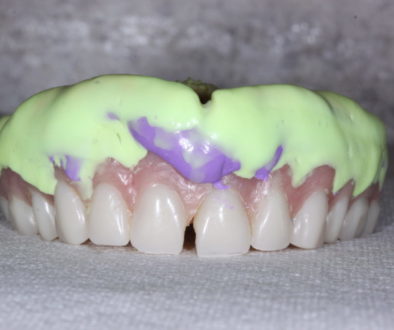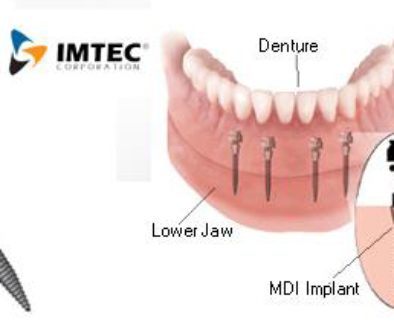Denture Adjustments
One of the biggest challenges with dentures is creating even pressure everywhere so that you don’t get sore spots. Even with the best techniques, sore spots and adjustments are an inevitable part of the process in getting dentures to a place where they are relatively comfortable to wear. When at all possible, you should have a dentist adjust your denture as they will be able to see things that you can’t and they have generally have a much better grasp of exactly what needs to be done to fix your problem.
That said, there are some cases where you simply can’t get in to see a dentist or you just don’t have the money available. In these cases, I’m going to show you the best way to adjust your denture so that you can get some relief and not destroy your denture in the process.
Before you get started you’ll need a couple of things…
- A Dremel – This link will take you to a list of Dremel rotary tools on Amazon. You can get a cheap one for as little as $25.
- The right dremel tip. Most Dremel’s come with a starter pack of tools that have one of these in them.


3. Non-toxic magic marker (don’t use a sharpie!)
Before you get started there are some major guidelines to follow when adjusting your denture. Following these guidelines will keep you from ruining your denture.
- If it has been a long time (5+ years) since you your dentures were made or if you recently had your teeth extracted your gum tissue may have shrunk causing the denture to not fit well. You get a lot of shrinkage of the tissue in the first 6 months after your teeth are taken out. The denture will move all around the rubbing motion will cause sore spots. In these cases you usually need a reline before doing any adjustments. See our page on relines first.
- If you have a sore spot because the teeth on your dentures don’t hit evenly, you should probably see a dentist. Adjusting the bite on a denture is very challenging and I don’t recommend you try to fix it yourself. Generally you want full, even contact on all the back teeth at the same time. This is very challenging for you to figure out yourself.
- Always remove as little material as possible in the areas of the sore spots. You can always take more away but you can’t add more material (usually). Generally this means you’ll brush over the area with your bur and remove as little as 1/10th of millimeter in thickness (look on a ruler as to how tiny this amount is).
- When you adjust an area on the denture and place it back in your mouth, the sore spot should feel less painful but you will still have some soreness there. It will take several days for the sore areas to heal so that you can re-evaluate if you need to adjust any more. Do not keep adjusting until you feel nothing because at that point you’ll have taken away too much material.

- Be especially careful in the following areas of upper dentures. These are the critical areas for the suction of the denture and if you take too much away, they won’t stay in.
- If there are any unusual areas of tissue growth or areas that won’t heal, you should see a dentist. This can be the sign of a more serious problem.
With all that in mind and your tools ready, you’re going to want to look in your mouth and figure out exactly where the sore spots are. This is typically what they are going to look like. They look whitish-yellow and are generally quite painful. Occasionally early sore spots will be bright red instead (they look like that before the top layer of tissue comes off).
Take your non-toxic magic marker and place a little bit of the ink right around the sore spot. Immediately put your denture in and allow some of the ink to transfer onto your denture. This will show you exactly where the sore spot is on the denture. Don’t try to eyeball it.
Now take your Dremel and remove a small thickness of the denture in just that area (remember, think 1/10th of a millimeter). Try it back in and see if you feel some relief in the area. If it feels better, give it a couple of days to heal before adjusting any more. If no relief, adjust a little more. Do this for all your sore spots. It is not unusual to need several adjustments before the denture becomes comfortable enough to wear and eat in without developing sore spots.




